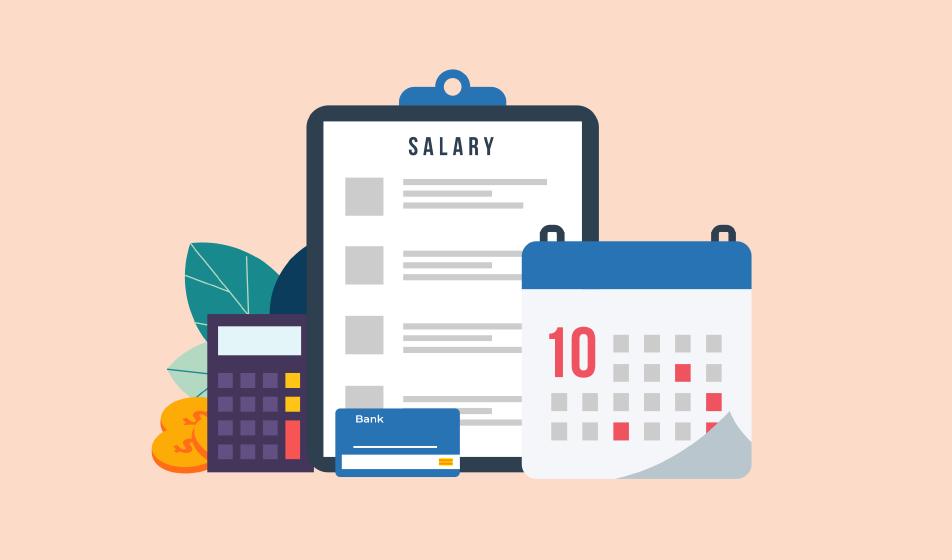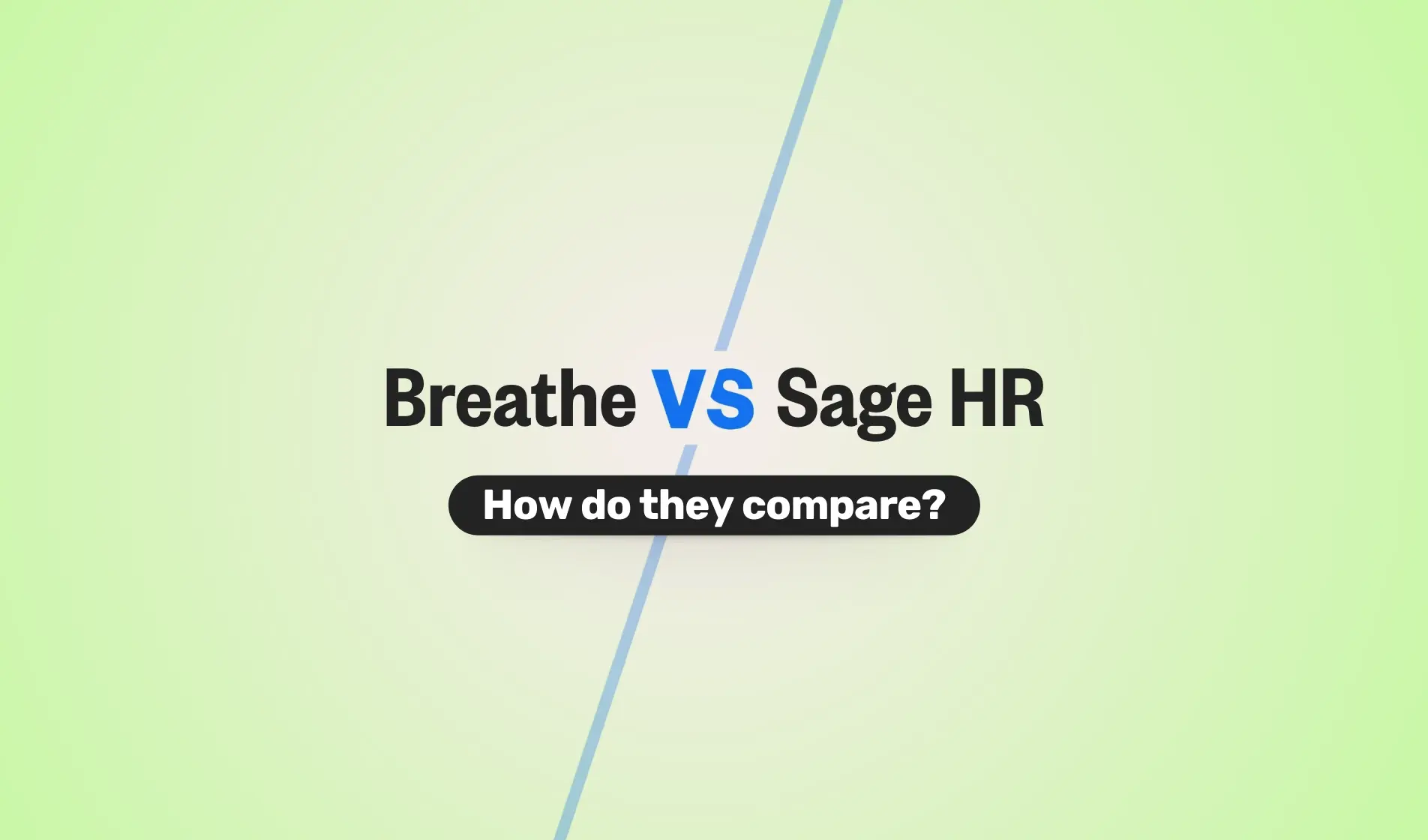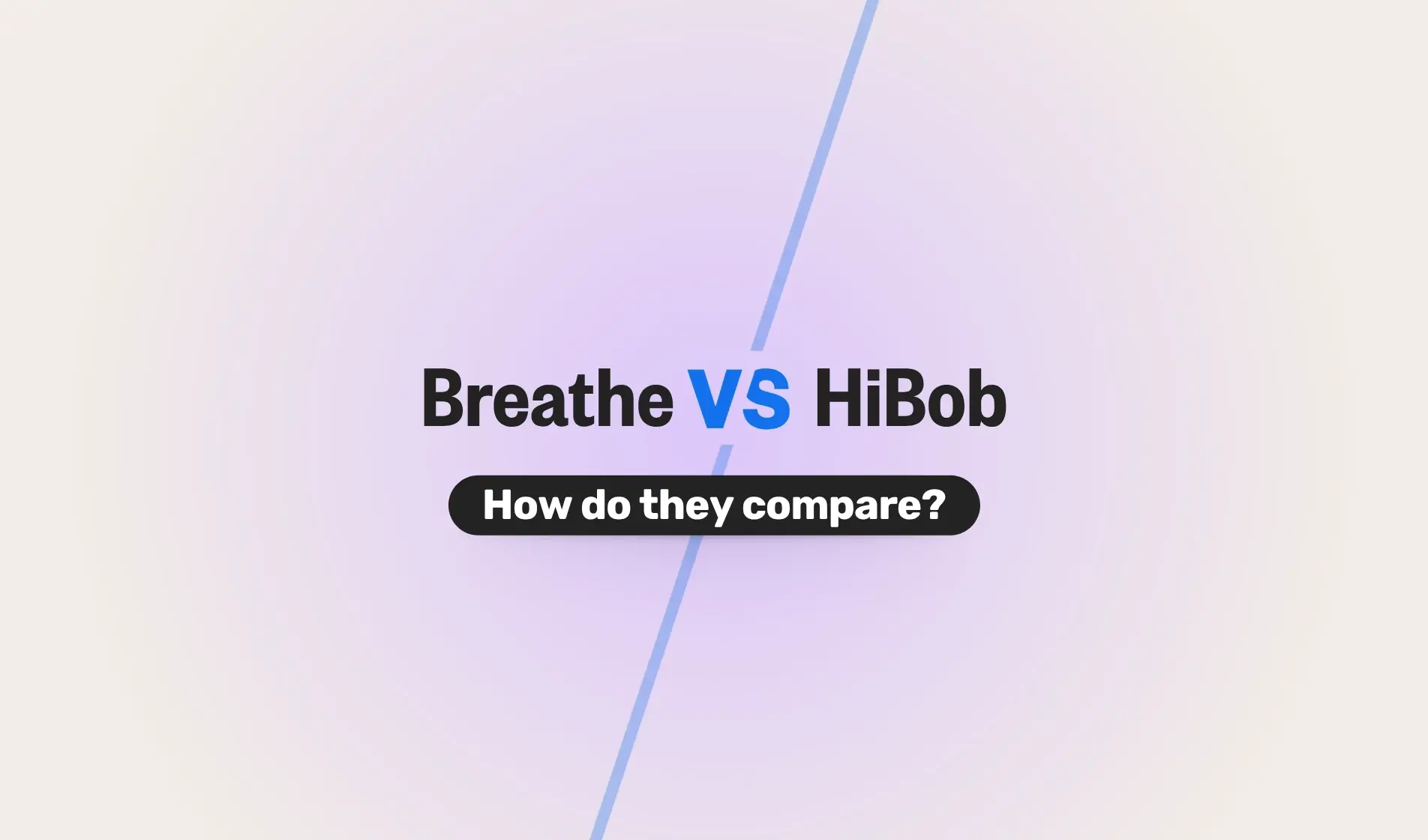If you're growing your business from the ground up, it's inevitable that you'll eventually take on extra pairs of hands when things get busy. And if you hire new people you'll need to pay them - this is where payroll comes in.
But what does payroll mean and what does it involve? In this blog post, we'll cover the definition of payroll, why it's necessary and the different options you have when it comes to running it within your company.
Skip to:
What should be included in payroll?
The different ways of running payroll
Why payroll taxes matter for SMEs
What is a payroll tax holiday?
The different ways of running payroll
Legal considerations in payroll
Best practice examples of businesses
What is payroll?
The term ‘payroll’ means a list of employees within a company and how much they are to be paid, but nowadays it is more commonly used in reference to employee wages and making a record of the amount of money an employee has made over time.
Payroll is essential in any business in which people are employed to work. Payroll is needed to:
-
Calculate how much your employees need to be paid
-
Calculate how much tax and NIC you need to deduct from an employee's gross pay
-
Report employee pay details to HMRC
-
And most importantly, pay your employees!
If you're in the process of registering yourself as an employer, the UK government website provides an in-depth guide on getting started.
What should be included in payroll?
In order to run payroll, you firstly need to know what details are needed. Here’s a breakdown of the different elements that make up payroll.
Employee details
Before you’re able to run payroll, you’ll need to access to your employees’ details such as their name, address, national insurance number and salary.
You can do this with the help of intuitive online HR software.
Employee hours
If you pay your employees on an hourly rate, you’ll need to have a system in place to monitor the hours they work so you can ensure they are paid the correct amount.
For employees that are on a salary, you may choose to monitor when they’re working to ensure they are adhering to their contracted hours.
You’ll also need to log sick days for each employee depending on your company policy, as well as any overtime employees have worked.
Salaries, wages and net/gross pay
You need to keep a record of whether your employees are on a salary or an hourly wage, as this will determine how you calculate their pay.
A salary is a pay packet that an employee receives on a monthly basis. These payments are based on a yearly amount that is divided into 12 individual payments.
But depending on the nature of your business, you may choose to pay your employees a wage instead of a salary. A wage is an amount based on hours worked rather than a yearly fixed amount. You’ll set an hourly wage and multiply this by the number of hours worked to calculate their total pay in a particular period.
On your employees’ payslips you’ll need to indicate their gross and net pay. Gross pay is an employee’s total pay within that period and net pay is the amount they receive after tax and any other deductions.
Additional payments
Again, depending on the industry your business is based in, employees may receive commission and/or tips on top of their basic pay. These will need to be accounted for in payroll too.
Tax and deductions
By law, every employee has to pay tax and national insurance from their total gross pay. This amount can vary depending on the total amount an employee has earned and their circumstances. Regardless, it is the employer’s responsibility to ensure the correct amount is deducted in payroll and paid to HMRC each month. It’s important you complete this on time each month or you could be charged a penalty.
Employee benefits
Within your business you may offer your staff a generous benefits package, as this can help to boost your company culture as well as employee morale and motivation. This can include private healthcare, a pension package and employee discounts. It’s important that you include these factors in payroll as some can affect the amount employees are paid each period.
What are payroll taxes?
Payroll taxes are the deductions taken from an employee’s pay – and the contributions employers need to make on top. These include things like income tax, National Insurance and pension contributions. Employers are responsible for reporting them to HMRC and making sure everything’s paid correctly.
It’s not just about what comes out of your team’s pay packets – it’s also about what your business needs to budget for.
Employee contributions
-
Income tax: Deducted via PAYE based on the employee’s tax code and earnings.
-
National Insurance Contributions (NICs): Employees pay a percentage of their earnings above a set threshold.
Employer contributions
-
Employer NICs: Businesses pay NICs on employee earnings above a certain threshold (currently 13.8%).
-
Pension contributions: If your employees are enrolled in a workplace pension, you’ll also need to make minimum contributions.
Payroll tax rates at a glance (2025/26 tax year)
-
Income tax: 20% basic rate (up to £50,270), 40% higher rate, 45% additional rate.
-
Employee NICs: 10% on earnings between £12,570 and £50,270, 2% above £50,270.
-
Employer NICs: 13.8% on earnings above £9,100 per year (per employee).
-
Workplace pension: Minimum 3% employer contribution (5% employee).
(Rates accurate at time of writing – always check the latest HMRC guidance.)
Why payroll taxes matter for SMEs
For small and medium-sized businesses, payroll taxes aren’t just another admin task – they’re a significant cost. HMRC collected over £160 billion in PAYE income tax and National Insurance contributions in the last tax year alone. That’s a big responsibility for businesses of every size – especially when you’re juggling everything else.
And staying compliant isn’t always easy. According to the Federation of Small Businesses, SMEs spend around £4,500 and 44 hours a year just on tax compliance. Across the sector, that adds up to nearly £25 billion annually – much of it down to limited resources and manual processes.
Understanding payroll taxes
Once you understand how employee and employer contributions work, it’s worth looking at the bigger picture. Payroll taxes don’t just affect your accounts – they can shape cash flow, hiring plans, and even team morale if things go wrong.
They’re also closely tied to compliance. Late payments or incorrect deductions can lead to penalties from HMRC – and unwanted admin headaches.
That’s why many SMEs turn to payroll software or trusted providers. It’s a simple way to reduce the risk of errors and free up more time to focus on growing the business.
What is a payroll tax holiday?
A payroll tax holiday is when the government temporarily pauses or reduces certain payroll taxes to ease financial pressure. It’s more common in the US, but the UK has introduced similar measures in the past – usually during times of economic strain, like recessions or national crises.
How it works
-
Employers or employees (sometimes both) are allowed to pause or reduce contributions to payroll taxes like National Insurance.
-
The aim is to boost take-home pay for workers and ease cash flow pressures for businesses.
UK examples
-
During the COVID-19 pandemic, the UK government introduced measures such as the Job Retention Scheme (furlough) and temporary NIC reliefs for certain sectors.
-
Employee relief: Earlier relief came via a 2 percentage point cut in the employee NI rate - from 12% to 10%, effective 6 January 2024, benefiting around 27 million workers.
-
However, the employer impact: The 2024 Autumn Budget, effective 6 April 2025, increased employer NI costs by reducing the secondary threshold (the salary level at which employer NI begins) from £9,100 to £5,000, while increasing the NI rate from 13.8% to 15%
Benefits of a payroll tax holiday
-
For employees: More take-home pay during the relief period.
-
For employers: Reduced staffing costs, helping with retention and recruitment in challenging times.
-
For the wider economy: Encourages spending, which supports growth
Things to consider
-
A payroll tax holiday is only ever temporary. Once the holiday ends, contributions return to normal levels.
-
Businesses must be prepared for the administrative side, making sure payroll systems are updated correctly to reflect both the start and the end of the holiday.
-
Relying too heavily on short-term relief can create challenges when taxes are reinstated, especially for SMEs with tight margins.
The different ways of running payroll
When setting up payroll to pay your employees, you’ll have a few options to choose from and you’ll need to take some time to decide on the best option for you and your business.
By hand
Needless to say, doing payroll by hand is the cheapest but the most time-consuming option. If you choose to do the company’s payroll by hand you'll need to make sure you do it correctly and adhere to all calculations and taxes required – if you don’t you could be breaking the law and could potentially have a nasty fine coming your way.
And, if you want to keep your employees happy and maintain retention levels, you’ll need to make sure you’re paying the correct wages and on time. Get this wrong and it could have disastrous consequences on your business.
Hire an accountant
Whilst having someone else to run your payroll for you would free up your time, having an accountant on board can significantly ramp up your costs. However, the big plus side is that the extensive training accountants receive means that they are used to working with large amounts of data and are able to work efficiently and accurately with minimal errors.
Payroll software
The cheapest and least time-consuming option is to use a software package to help you run your payroll accurately and efficiently. However, when choosing a payroll software it’s important you take some time to consider the features your business needs from the software.
Some things you may need to consider include:
- Can the software produce payslips?
- Can I report PAYE through the software?
- Can I record and make pension payments through the software?
- Am I using an online HR software that is designed to work with my payroll software?
Legal considerations in payroll
Running payroll isn’t just about making sure your team’s paid on time – it’s also part of your legal responsibilities as an employer.
In the UK, payroll is closely regulated. If things go wrong, businesses can face fines, penalties and even damage to their reputation.
Here are the key areas SMEs need to stay on top of:
PAYE (Pay As You Earn) compliance
-
Employers must operate PAYE to deduct income tax and National Insurance from employees’ wages.
-
These deductions must be reported to HMRC in real time (RTI), usually every time you run payroll.
-
Even if your team’s been paid correctly, missing or late payroll submissions can still lead to fines from HMRC
National Minimum Wage (NMW) and National Living Wage (NLW)
-
As an employer, it’s your legal responsibility to make sure every employee is paid at least the current minimum wage for their age and employment status.
-
HMRC carries out regular audits – and if a business is found to be underpaying, it can face penalties and be publicly named.
Pensions and auto-enrolment
-
Under the Pensions Act 2008, employers must automatically enrol eligible employees into a workplace pension scheme – and make at least the minimum contributions required.
-
If a business repeatedly fails to meet its pension duties, The Pensions Regulator can issue fines – in some cases, up to £10,000 per day.
Holiday pay and statutory leave
-
Payroll must account for statutory entitlements like holiday pay, maternity/paternity pay, and sick pay.
-
Errors here are a common cause of disputes and even employment tribunal claims.
Record keeping
-
Employers must keep detailed payroll records for at least 3 years (HMRC recommends 6).
-
Records should include pay, deductions, hours worked, and benefits provided.
Penalties for non-compliance
HMRC can apply small late filing or late payment penalties if employers miss PAYE deadlines.
-
Penalty range: HMRC can impose penalties ranging from minor late-filing charges to severe penalties up to 100% of the unpaid tax, particularly for deliberate non-compliance or failure to notify HMRC
-
Typical PAYE penalties: For PAYE and NICs, penalties include:
-
An initial 5% of the unpaid tax if not paid by the penalty date,
-
A further 5% if unpaid after 5-6 months,
-
Another 5% if the amount remains unpaid after 12 months
-
Recent penalty totals
While specific SME-only penalty figures for PAYE in 2023/24 aren’t publicly broken out, HMRC collected £220 million in late-filing penalties in the 2022–23 tax year - marking a five‑year high.
Why it matters for SMEs
For small businesses, the administrative load can feel overwhelming, but the risks of ignoring compliance are far greater.
The good news is that with modern payroll software, many of these processes (like RTI submissions, pension auto-enrolment, and record keeping) can be automated, reducing errors and helping you stay compliant without a huge time investment.
Best practice examples for businesses
Learning from how other organisations manage payroll can help SMEs avoid common pitfalls and adopt more efficient processes. Here are some examples of payroll best practice in action:
Automating compliance checks
A growing business using Xero Payroll saw a real benefit from built-in compliance features. The software handled the hard stuff - like calculating tax, pension contributions and leave, submitting RTI to HMRC, and keeping everything up to date with the latest legislation. It meant accurate, compliant pay runs - without the manual checklists or admin stress.
Linking HR and payroll data
Linking your HR and payroll systems - like Breathe and Xero - means employee data flows smoothly between the two. It cuts out the double entry, reduces errors, and saves your team valuable time. You’ll keep the flexibility of specialist tools that work well together, rather than being tied into one all-in-one system. The result? More accurate records, simpler HMRC compliance, and a setup that grows with your business.
Supporting seasonal staff
Blue Sky Leisure, a hospitality business with a large seasonal workforce, previously spent a day each week reconciling manual timesheets. By adopting Breathe HR with the Rota, Time & Attendance add-on, they cut HR admin by 10 hours a week and sped up timesheet approvals. Managers gained quick access to rotas and reports, while finance staff could view shifts and payslips via mobile. The result: faster, more accurate payroll during peak periods and a smoother experience for employees.
What SMEs can take away
-
Invest in automation: Even simple payroll software can help prevent errors and reduce admin.
-
Keep systems connected: Integrating HR and payroll ensures smoother data flow.
-
Plan for peaks: If your business relies on seasonal workers, have a system ready to manage fluctuating hours.
-
Know your limits: If compliance feels unmanageable in-house, outsourcing can be a smart option.
By adopting these best practices, SMEs can avoid costly mistakes, stay compliant, and ensure their employees are always paid correctly and on time - which, in turn, strengthens trust and morale.
Payroll isn't just numbers
Although the whole point of payroll is essentially to pay your employees, it's crucial that you get it right and keep within the law when managing it. Therefore choosing how you manage payroll within your company is an incredibly important decision, so giving it thorough consideration is something you should prioritise.
.webp)
Author: Sarah Benstead
Sarah is a Product Marketing Specialist here at Breathe. Always innovating, she loves writing about product releases in an engaging & informative way. When she's not coming up with new ideas, she enjoys long walks with her dog, Clifford.









